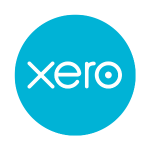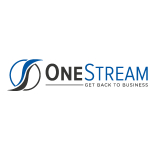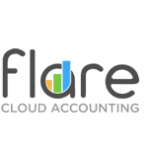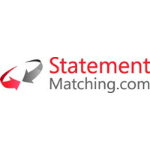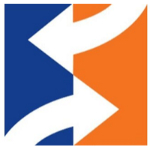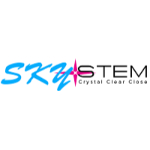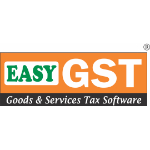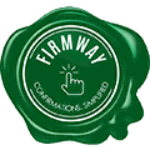TechnologyCounter provides genuine, unbiased real user reviews to help buyers make informed decisions. We may earn a referral fee when you purchase through our links, at no extra cost to you.
List of 15 Best Reconciliation Software
Showing 1 - 15 of 24 productsBlackLine is a leading accounting and finance automation software that streamlines and simplifies critical financial processes for businesses of all sizes. With an intuitive and user-friendly interface, BlackLine provides a seamless experience for ma...Read BlackLine Reviews
Xero Accounting is a cloud-based accounting software designed to simplify and streamline financial management for individuals and small businesses. With its user-friendly interface features, Xero helps users efficiently track income, expenses, and ca...Read Xero Accounting Reviews
Adra Accounts is a user-friendly is a accounting software that streamlines your financial processes. Say goodbye to manual tasks and hello to accurate and organized financial data with Adra Accounts. Developed to simplify and optimize your accounting...Read Adra Accounts Reviews
OneStream XF is a dynamic financial software solution designed to streamline and enhance your companys financial processes. With its advanced capabilities and user-friendly interface, OneStream XF is the perfect tool for streamlining budgeting, plann...Read OneStream XF Reviews
Gresham is a software solution that simplifies your workload. With its user-friendly interface features, Gresham streamlines bookkeeping, inventory management, and sales tracking, making it an invaluable tool for businesses of all sizes. Say goodbye...Read Gresham Reviews
Flare is a software solution that simplifies your tasks and boosts your productivity. With Flare, you can easily streamline your work processes, collaborate with your team effortlessly, and stay organized like never before. Say goodbye to tedious and...Read Flare Reviews
Statement Matching is a highly efficient software designed to streamline the process of verifying and reconciling financial statements. Developed with the latest technology, this software is a game-changer in accurately matching statements and minimi...Read Statement Matching Reviews
AutoRek is a leading software company that specializes in providing innovative solutions for data management and reconciliation. With a team of experienced professionals technology, AutoRek helps businesses streamline their processes and ensure accur...Read AutoRek Reviews
ReconArt is a software solution designed to simplify and streamline your reconciliation process. With user-friendly features technology, ReconArt provides accurate is a management of financial data, allowing you to focus on strategic decision-making...Read ReconArt Reviews
Cashbook is a perfect financial tool for individuals and businesses alike. With its simple yet efficient design, Cashbook helps you manage your expenses and track your income effortlessly. Say goodbye to the hassle of manual bookkeeping and hello to...Read Cashbook Reviews
SkyStem is a financial services company that empowers businesses with intelligent solutions. Our innovative technology and expert team work tirelessly to provide seamless financial management and create value for organizations of all sizes. With a fo...Read SkyStem Reviews
Sage 50cloud provides a comprehensive desktop accounting solution that streamlines account management and allows for more focus on business growth. Their user-friendly Sage 50cloud Accounting software has greatly benefitted small businesses and entre...Read Sage 50cloud Reviews
EASYGST is a is a software designed to streamline your GST (Goods and Services Tax) filing process. With its user-friendly interface features, EASYGST is the must-have tool for businesses of all sizes to stay compliant and maximize efficiency. Say go...Read EASYGST Reviews
Firmway is a software solution for businesses of all sizes. Our platform offers a range of features designed to streamline and optimize your companys processes, from project management to communication to data analysis. With Firmway, you can stay ahe...Read Firmway Reviews
enReconcile is a software designed to simplify the complex process of reconciliation. With its user-friendly interface features, enReconcile streamlines the reconciliation process, saving you time and effort. Say goodbye to manual data entry and huma...Read enReconcile Reviews
- What Is Reconciliation Software?
- Top Reasons Why Businesses Need Reconciliation Software?
- What Are the Top Key Features of Reconciliation Software?
- What Are the Top Benefits of Reconciliation Software?
- What Are the Steps to Choose the Right Reconciliation Software?
- What Are the Types of Reconciliation Software for Different Industries?
- What Are the Technology Trends for Best Reconciliation Software?
- What Are the Deployment Options for Reconciliation Software?
What Is Reconciliation Software?
Reconciliation software refers to an automated system that is utilized by organizations for the purpose of comparing, reconciling, and validating financial information. Comparing and consolidating data from many sources, including both contemporary and past accounting systems, alongside cash management solutions, has proven to be effective.
This process aids in the identification of potential data discrepancies that may serve as risk factors or indicate difficulties with data integrity. Reconciliation tools possesses the capability to facilitate the preparation of financial record reconciliations, identify errors, notify financial management of potential concerns, and optimize the overall reconciliation procedure.
In summary, the best reconciliation software is a robust solution developed to assist enterprises in guaranteeing precision and uniformity in their financial data. This feature enhances the comprehensibility of financial operations, facilitating more informed decision-making and enhancing the quality of financial reporting.
Top Reasons Why Businesses Need Reconciliation Software?
1. One potential solution to streamline the process of reconciling accounts is through the implementation of the best reconciliation tools, which would effectively eliminate the requirement for manual reconciliation.
2. The process of promptly identifying and reconciling items is facilitated with the automated population of missing transactions.
3. It is imperative to establish comprehensive audit trails for every transaction.
4. One effective strategy for reducing errors is to implement validation mechanisms.
5. One potential solution to decrease the amount of time allocated to reconciliations is through the implementation of automation techniques.
6. Enhance interdepartmental coordination and promote the exchange of information.
7. Alleviate the potential risks associated with compliance and reporting.
8. Produce reports in a timely manner to detect and analyze any inconsistencies or discrepancies.
9. One should generate and retain supplementary records for the purpose of reconciliations.
10. Attain enhanced visibility and exert control over the process of reconciliation.
11. Enhance precision by implementing automated systems and optimizing operational workflows.
12. One should establish and uphold comprehensive audit trails that are readily accessible for retrieval purposes.
13. Allocate duties to several individuals with a focus on accountability and responsibility.
14. The task at hand involves the development of tailored reports that align with the specific needs and objectives of the organization.
15. The objective is to reduce expenses related to manual procedures.
What Are the Top Key Features of Reconciliation Software?
The top key features of reconciliation software include:
1. Automated Adjustment Handling: The use of automated adjustment handling guarantees the detection and reporting of any disparities that may arise between the statements provided by financial institutions and the corresponding account data. This functionality serves to mitigate human errors and enhance precision.
2. Transaction Pipelining: Transaction pipelining is a process that facilitates the efficient and streamlined validation, linking, and reconciliation of transactions across several accounts. The utilization of this approach streamlines the entirety of the reconciliation procedure and serves as a preventive measure against potential errors.
3. Real-Time Reconciliations: The implementation of real-time reconciliations allows financial institutions to promptly detect any disparities that may exist between their accounts and the corresponding financial institution statements. This measure aids in the establishment of a precise and punctual procedure of reconciliation.
4. Automated Alerts: Automated notifications serve the purpose of ensuring that account holders are duly informed on any inconsistencies that may arise between the statements provided by financial institutions and the data pertaining to their accounts. This measure aids in the prevention of fraudulent actions and guarantees adherence to regulatory obligations.
5. Reporting and Analysis: Reconciliation software possesses the capability to provide comprehensive reports and analyses, thereby aiding financial institutions in gaining a deeper comprehension of their financial performance and activities. This practice aids in enhancing the process of decision-making and ensuring optimal operational efficiency inside the financial institution.
6. User-friendly Interface: Reconciliation software is commonly equipped with a user-friendly interface, which facilitates its utilization by financial institutions. This feature facilitates the streamlining of transaction setup and progress monitoring.
7. Integration Capabilities: The best reconciliation tools frequently incorporates with many financial technologies and platforms, including accounting software, in order to offer a holistic overview of an organization's financial operations and effectiveness. This practice aids in guaranteeing the accuracy and currency of the data.
8. Compliance Support: Reconciliation software solutions plays a crucial role in facilitating compliance with regulatory standards by effectively notifying account holders of any inconsistencies and offering comprehensive reporting functionalities.
9. Security: Reconciliation tools commonly incorporates supplementary security measures to safeguard the integrity and confidentiality of financial data. Account data can be safeguarded against potential cyber-attacks through the use of various security measures, such as encryption and two-factor authentication.
What Are the Top Benefits of Reconciliation Software?
1. Automation of reconciliations: Reconciliation software serves to automate the task of reconciling financial accounts, thereby reducing or eliminating the need for manual intervention.
2. Improved accuracy: The utilization of the best reconciliation software solutions has the potential to mitigate errors that arise from human data entry, hence enhancing the overall accuracy of the process.
3. Increased efficiency: The implementation of automated reconciliation has the potential to significantly decrease the time needed to carry out the procedure, hence resulting in enhanced operational effectiveness.
4. Reduced costs: The use of the best reconciliation tools has the potential to significantly decrease the duration and resources allocated to completing the process, hence leading to a reduction in associated expenses.
5. More effective reporting: Reconciliation tools has the capability to generate results that are both timely and accurate, thereby facilitating the process of decision-making.
6. Improved Security: Reconciliation software has the potential to enhance security measures by mitigating the likelihood of fraudulent transactions.
7. Improved Visibility: Automated reconciliations offer enhanced transparency regarding financial accounts and transactions, hence facilitating improved financial management for organizations.
What Are the Steps to Choose the Right Reconciliation Software?
1. Identify your exact needs: Begin by conducting an assessment and documentation of your existing financial operations, as well as the software solutions you are in pursuit of. One should reflect upon the primary objectives of the software, the desired features, and the authorized budget.
2. Research the marketplace: Conduct a comprehensive examination of the currently accessible financial reconciliation software solutions offerings in the market through the analysis of scholarly literature, exploration of vendor websites, and engagement in discussions with industry professionals. It is advisable to inquire about many aspects such as product features, pricing, customer service, and other pertinent issues through the use of questions.
3. Develop your criteria: The following is a compilation of essential factors to consider when choosing appropriate software: simplicity of utilization, compatibility, user experience, and capabilities encompassing document management, audit trail, and automated reports.
4. Compare the features: Thoroughly analyze the characteristics of the best reconciliation tools in order to effectively evaluate the advantages and disadvantages associated with each alternative.
5. Test it out: After the process of narrowing down the available possibilities, it is advisable to evaluate the program by either acquiring free trial copies or participating in online demonstrations.
6. Get feedback: Solicit feedback from both existing and prospective users. This can offer significant insights that may have been ignored during the study and selection process.
7. Make a decision: Ultimately, you will be prepared to reach a conclusion by considering the gathered data and feedback. It is imperative to thoroughly evaluate the aspects of security, scalability, and support choices in order to make an informed decision.
What Are the Types of Reconciliation Software for Different Industries?
A wide range of reconciliation software solutions are employed across diverse industries. Several instances encompass software applications designed for various industries such as banking and financial services, government agencies, entertainment, healthcare, manufacturing, retail, and logistics.
In the realm of banking and financial services, software applications encompass a range of functionalities, such as general ledger management, accounts payable processing, and accounts receivable reconciliations.
Government entities often employ the best reconciliation tools to facilitate the process of payroll and budgetary reconciliations. Software is commonly employed in the entertainment and media sector to facilitate media asset management and workflow tracking. Healthcare organizations have the potential to utilize software specifically developed for the management of patient accounts and the reconciliation of billing processes.
Manufacturers often utilize software that encompasses functionalities such as inventory management and procurement reconciliation. Conversely, retail organizations commonly employ software that facilitates point-of-sale system reconciliations and analysis of sales data.
Finally, industries involved in logistics may employ specialized software for the purpose of managing shipment and fleet reconciliations. In general, there exists a diverse range of the best reconciliation software options that are contingent upon the specific sector in question.
What Are the Technology Trends for Best Reconciliation Software?
The technology trends for best reconciliation software would include the following:
1. Automation: The implementation of automation in the reconciliation process guarantees enhanced precision and a decrease in the duration required for completion. This process aids in the reduction of human data input, enhances operational efficiency, and mitigates the potential for errors.
2. Cloud-based solutions: Cloud-based reconciliation tools enable users to access data from a centralized place, regardless of time or geographical constraints. This practice aids in the reduction of administrative overheads and enhances scalability.
3. Artificial Intelligence and Machine Learning: Artificial intelligence (AI) and machine learning (ML) algorithms have the potential to enhance the accuracy of the reconciliation process through their ability to conduct advanced data analysis and generate valuable insights.
4. Reporting: The presence of robust reporting tools empowers users to efficiently access and scrutinize data, facilitating the monitoring and customization of performance metrics, as well as the identification of potential areas for enhancement.
5. Security: The implementation of robust security mechanisms is crucial in safeguarding data privacy and mitigating the risk of data theft.
6. Interoperability: It is imperative for reconciliation software to possess the capability to seamlessly interact with other financial systems, facilitating the smooth transmission of data.
7. Mobility: Mobile-friendly solutions offer the capability to access data from many devices, hence augmenting the overall user experience.
What Are the Deployment Options for Reconciliation Software?
The available deployment choices for reconciliation software are contingent upon the specific software being utilized and its inherent functionalities.
In a general sense, reconciliation software has the capability to be implemented through many deployment methods, including cloud-based deployment, on-premises deployment, or a combination of both known as a hybrid solution.
Cloud-based solutions offer comprehensive processing and storage capabilities through an internet connection, hence reducing the need for extensive IT infrastructure. This makes them an attractive choice for organizations facing limitations in terms of costs and resources. On-premises solutions refer to the utilization of reconciliation software that is installed and managed on the servers and hardware owned by a company.
This approach offers enhanced control over security and privacy, while also circumventing the operational burdens associated with cloud-based operations. Hybrid systems offer a combination of cloud-based and on-premises deployments, hence enabling optimal adaptability and scalability.
Hybrid solutions are gaining popularity among enterprises due to their ability to leverage the cost and performance advantages offered by both cloud and on-premises deployments.

